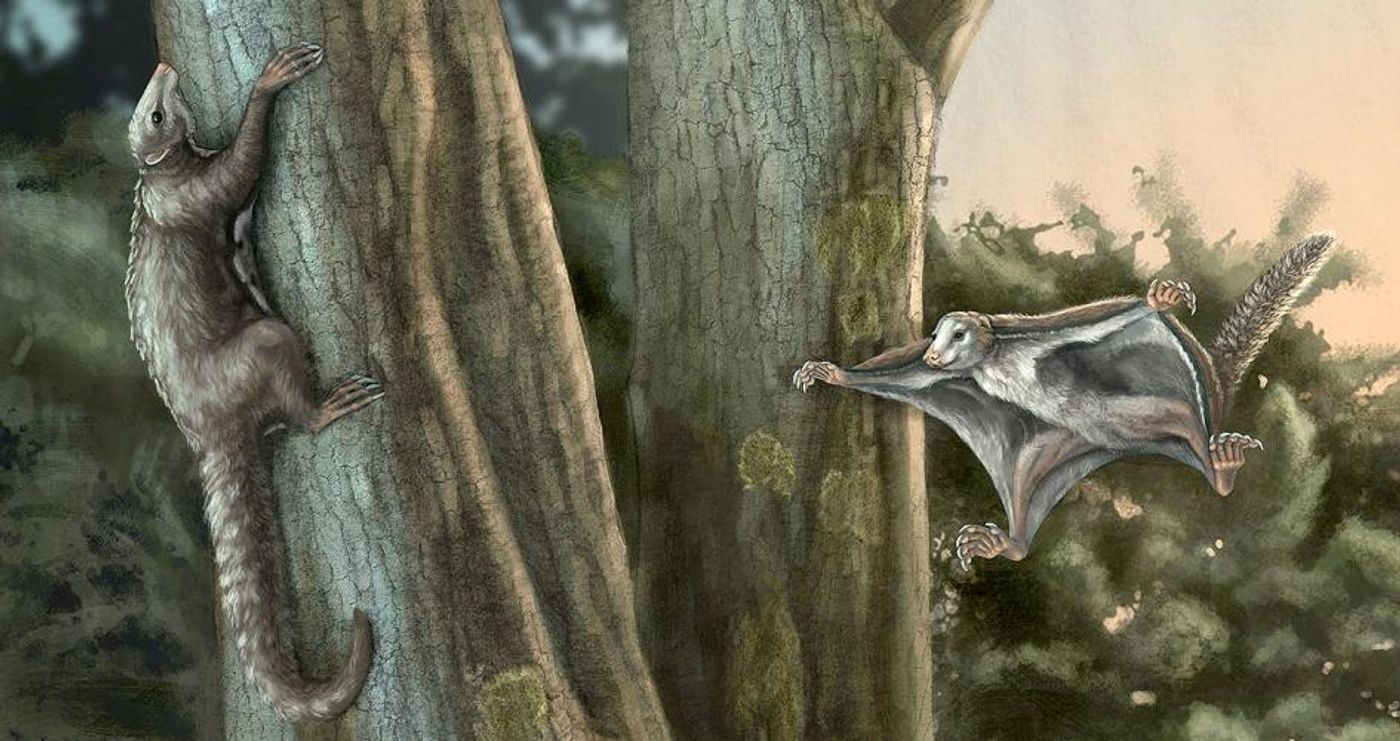This Might Be the Earliest 'Gliding' Mammal Ever Discovered
When you think back to about 160 million years ago, you most likely imagine a world roamed by the dinosaurs and not much else. In fact, that’s just the type of world that modern science fiction movies have depicted for ages.
In many of these depictions, dinosaurs were at the pinnacle of their time, and mammals were non-complex and just beginning to evolve into the diverse and modern tree of creatures we have on the planet today.
Image Credit: April I. Neander/University of Chicago
On the other hand, new research is opening our eyes to new realities, showing us how the early Earth was a significantly more diverse place than originally thought.
Two new papers published in the journal Nature describe winged mammalian fossils dated at approximately 160 million years old, older than any fossils of their kind before it. The wings are skeletal with folding membranes, much like what we’d see in a modern bat.
The discovery suggests that early mammals existing during the time of the dinosaurs were utilizing many complex skills that scientists attribute to modern evolution. Building from that, perhaps mammalian creatures weren’t as simple and limited back in the day as we’ve assumed for so long.
The fossils were discovered in China, and the creatures that left them behind are being named Maiopatagium furculiferum and Vilevolodon diplomyl. The animal families that these animals belonged to are completely extinct today, but the discovery is still significant, according to scientists.
Related: 'Baby Louie' fossil identified as a bird-like dinosaur species
"These Jurassic mammals are truly 'the first in glide,'" said study co-author Zhe-Xi Luo, Ph.D., a professor at the University of Chicago. "In a way, they got the first wings among all mammals."
"With every new mammal fossil from the Age of Dinosaurs, we continue to be surprised by how diverse mammalian forerunners were in both feeding and locomotor adaptations. The groundwork for mammals' successful diversification today appears to have been laid long ago," Luo continued.
Only a handful of gliding mammals exists on the planet today, including both bats and flying squirrels. The gliding quality appears to have been phased out in most mammals, as they survive effectively on foot. Several million years ago, however, gliding from tree to tree could have been advantageous for dodging the large land-based predators we call dinosaurs.
The research also revealed that the creatures exhibited complex joints and bone structure, which meant they were probably agile, capable of avoiding predation and hunting smaller prey.
"Mammals are more diverse in lifestyles than other modern land vertebrates, but we wanted to find out whether early forerunners to mammals had diversified in the same way," Luo said. "These new fossil gliders are the first winged mammals, and they demonstrate that early mammals did indeed have a wide range of ecological diversity, which means dinosaurs likely did not dominate the Mesozoic landscape as much as previously thought."
Related: Did dinosaurs actually roar?
The discovery is an eye-opener, convincing experts in the field that the early Earth was very different than it has been depicted for many years. With every new fossil discovery we make, we learn just how complicated life on Earth is, and always was.
Source: University of Chicago









